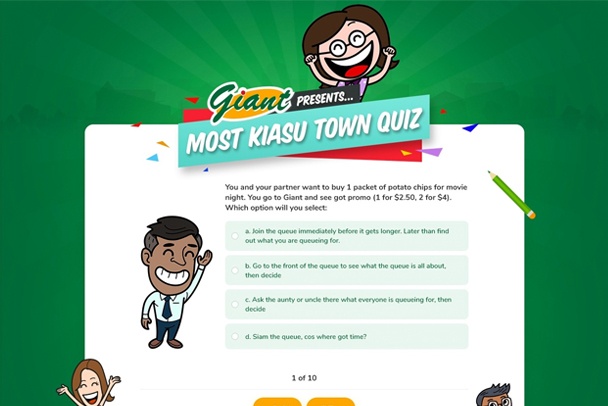Creativity is the most powerful and valuable asset for a marketer. It can help create new brands, improve customer relationships and open up new revenue streams. Creativity has been around since the dawn of time and it will always be an important part of human experience - but creativity in marketing is more than just art; its about innovation through design, storytelling through advertising, experimentation through PR campaigns etc. In this blog we'll explore how marketers can get creative to make their business grow!
What is creative marketing?
Creativity has been a hot topic in marketing for years. But what does it mean? Creativity can be found in everything we do - from designing your logo to writing copy that captures attention like no other, and even using music as part of an overall campaign strategy if we're feeling extra creative!
Creativity is the act of offering something that inspires your audience. Creative marketing, on the other hand is a combination of things and involves establishing and understanding your brand; knowing what your audience wants/needs; and connecting with their emotions.
As leader of a Creative Agency, I am often faced with the question of identifying if someone is capable of delivering strong Creative work.
There are specific traits we look out for during our search: creativity mixed with quality content or innovative ideas coupled up with strong communication skills--all put together make someone who's truly "creative."
When we discuss this, we think of areas such as design, music and art. But this fresh field of Creative Marketing utilises creative concepts to sell a business's products or services through the medium of marketing. To achieve this, it combines the most effective elements of both creativity and marketing.
Building a strong identity for your brand, utilising great content (not just blogging, but video, podcasting and more) plus the marketing of your services or products can contribute to being creative. As can considering the experiences of your customer.
Always keep in mind that your creative team cannot function alone. A creative marketing campaign cannot, should not and will not work without the important data and research to inform it and help it flourish. These marketing elements coexist in harmony.
Creative marketing campaigns require data and research to be successful. These two elements must come together to deliver a truly effective creative idea!
What Creativity in Marketing Looks Like Today
Creativity in marketing is all about mixing up the old with the new, and using your imagination to come up with ideas that will capture your customer's attention. There are a few key traits we look for when assessing creativity: imagination, innovation, quality content and strong communication skills.
1. Wendy's: "Where's the Beef?"
Wendy's first major ad campaign portrayed a supermarket shopper asking shoppers on an empty grocery store aisle, "where is the beef?". The following week on national TV, they aired a commercial where someone says to another person "What do you think of that big idea? I like it." and passes them a note. It read 'there's no beef here' which was of course referring to their competitor (McDonalds) since there wasn't any of their product in sight.
2. Giant: Kiasu Town Social Media
We developed a Brand Character for Giant to use as part of its Social Media Platforms. You can read more about this Creative Marketing Campaign for Giant.

Besides betting overwhelming response from the audience, we also secured a good number of Agency Awards for this work.
3. Red Bull: Stratos Jump
For decades, daredevil Felix Baumgartner had plotted and trained for his space jump from nearly 24 miles up - higher than any human has ever been before. Red Bull's Stratos Mission was a space diving mission from the edge of space, and Felix successfully completed his jump to Earth with ease after being lifted by a helium balloon in an attempt to break all world records.
Why Creativity is Important in Marketing
With the ever-changing business environment, marketing strategies need to be on point. Today's complex world has created an increase in demand for creative minds and innovative ideas that will set your company apart from others while attracting new customers who are looking for something fresh when they shop online or walk through a store door
"Today’s complex global marketplace requires innovation at all levels of operation." The way you market yourself can either help drive revenue up significantly (creativity) which would lead into increased profits; or hurt it by standing out too much against competitors with uninspired campaigns - this is where being original comes into play because if nobody else does these things first then there isn't anything close enough competition wise making yours unique. Creativity matters because it helps companies stand out from their competitors.
How to Improve Your Creativity
1. Learn Through Collaboration

Curiosity will lead you to creativity. Knowledge and the ability to use it will drive your business forward.
Creativity can be enhanced through collaboration with others. Learning from clients and employees alike will improve your ability to think outside the box and come up with new and innovative ideas.
Innovation drives business growth, so it's important to learn from others' mistakes as well as your own! Being open-minded about what you can do is a great way for marketers who work within very specific niches or industries to get the inspiration they need in order to come up with creative marketing campaigns that will help them stand out from the competition.
When you're open to new ideas and situations, you give yourself a chance at being creative! Collaboration is key in creativity because it gives marketers who work within very specific niches or industries that inspiration they need to come up with marketing campaigns that will boost their company's uniqueness.
If you're looking for ways to improve on this, we recommend starting with a focus group made up of both clients and employees.
2. Find Inspiration From Other Industries
Your next idea won't come from copying what a competitor has already done. So look for innovation in different industries and niches.
Research what businesses are dominating. Why
What businesses are you most loyal to? Why?
How can you transfer what worked for businesses outside your industry to your own market? Maybe you can improve on these ideas.
Taking inspiration from other industries is a great way to boost your own creativity.
3. Think inside the box

“Think outside the box” is how the saying goes, but we might have it backward. Constraints drive creativity as jazz great Charles Mingus once explained: “You can't improvise on nothing, man; you've gotta improvise on something.” In studies run at Rider University on the relationship between limits and creativity, students were given eight nouns and asked to use them to write rhyming couplets (the kind that appear in greeting cards). Another group was not given nouns but just told to write rhyming couplets. The work of both groups was then judged for creativity by an independent panel of experts.
Time and again, the participants in the group that started with the constraint of eight nouns outperformed the other group.
The point is that sometimes the blank page is too blank to be useful. That's why one of my cardinal rules in work is: Always know your starts and your endings. If I have these twin cornerstones in place, whatever goes in between a book, an article, a speech is simply about connecting the dots. Without dots to connect, I can get stuck or waste time wandering into tangential territory (which helps explain why my first novel took 11 years to complete).
Important caveat: Many people believe that time constraints that is, deadlines are a limit that enables creativity. Maybe. Maybe not.
Just set the deadline far enough into the future so you can build long periods of non-time into your schedule. Creative deadlines should be hard enough to make you stretch, not hard enough to make you snap.
4. Create your own “Three Ifs”
Many good innovators take an existing object and ask clever questions to twist the very concept of it and make it new. Steve Jobs didn't start with the idea of a smartphone. He just took an existing cell phone and asked a very simple question: how can we improve it to make it better – or the best?
Let's be clear about this – there are no universal recipes for innovation, and each person should develop her or his own approach depending on specialty, interest, type of thinking, or even the type of team he is participating in.
That said, I usually suggest you build creative thinking around three “ifs”:
(1) What would happen if I change it (the object/ system/ social relationship, etc)?
(2) What would I change or improve about this object if I wanted to use it in 10 years?
(3) What would I do if I had a one-million-dollar investment to improve it?
These questions can become powerful tools that can help you to think differently. It is important to exercise these skills by repeatedly using the “three ifs” formula (or designing your own set of questions) about all sorts of things. And many new ideas will pop up.
5. Keep learning
A creative mind is a curious mind, so make an effort to keep learning new skills and indulging your natural curiosity to find out more about the world and everything in it.
Once you've developed some creative skills, it's important to keep on challenging yourself and acquiring new knowledge to inspire you and help you grow. Whether you simply make an effort to read more in your spare time, or look into taking more actual courses, constant learning is vital to boost your creativity.
6. Get some exercise
Exercise can be a great way to clear your mind if you've been feeling under pressure or stressed out.
Numerous studies have shown that physical exercise (even just 30 minutes of aerobic activity) genuinely does help us become more creative as well as improve brain function! Personally I've started a daily walk that I feel lightens my mind which is essential to be Creative.

So next time you're in a bit of a creative rut, put on your running shoes and get your heart rate pumping and see if you can encourage your creative juices to flow more freely!
8. Use the Six Thinking Hats Technique
Sometimes you just need to start over. Forget everything and begin anew with a blank slate - break it down using six different coloured "thinking hats".
Using this process could help you look at things in a different way. It gives you the option to look at things in a "just the facts" manner (white hat); where things could go wrong (black hat); and possibilities, alternatives, and new ideas (green hat), for example.
By looking at a problem from several unique perspectives may be just what you need to find a solution. Here at our agency - We had a Certified Trainer come in and train the team on Six Thinking Hats and although it was interesting, we the method didn't really stick at our Agency.
How does creativity enhance advertising or marketing?
Creativity is not only the genesis of novel ideas, but also their successful implementation. The ability to think differently and come up with new ways to get people’s attention can make all the difference for an advertising or marketing campaign. Most importantly, creativity breeds freshness which in turn attracts consumers. It helps brands stay top-of-mind and ahead of their competitors.
How to measure creative marketing efforts
Creativity is a complex phenomenon, so it’s difficult to pinpoint its exact elements and measure the outcome of creative marketing initiatives. In fact, some researchers believe that creativity can be measured only in subjective terms rather than through quantifiable means. However, there are some parameters that can be looked at to get a gist of how creative marketing efforts have fared.
Some common ways to measure creativity include: the number of new ideas generated; the implementation success rate of these ideas; consumer engagement with the creative output; and whether or not the campaign has helped achieve business objectives.

If you don't create you stagnate
In order for a marketer to be successful, creativity is essential. It allows you to break free of the mundane and come up with fresh ideas that capture people’s attention. The best part is that creativity can be enhanced through practice and by following certain tips. So go ahead and start being creative – it could just help your career and business flourish!